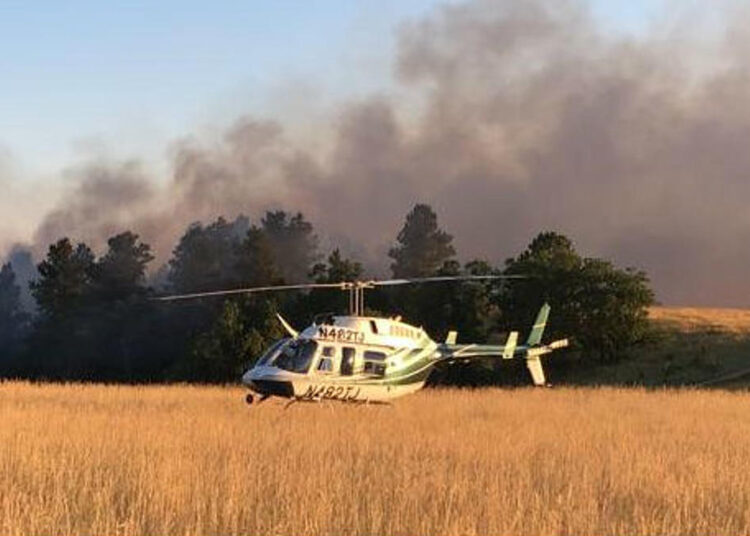Every year the Wyoming State Forestry Division (WSFD) holds a wildfire briefing that covers a range of topics regarding the upcoming fire season.
Due to the COVID-19 pandemic, this briefing has been canceled. In lieu of a formal briefing, the WSFD would like to provide a brief overview of the 2020 wildfire season as changes can be expected in light of COVID-19.
While the projections for Wyoming’s fire season point to a normal season, the WSFD expects a multitude of fires that will threaten lives and property. As usual, fires will be aggressively suppressed across the State of Wyoming. The WSFD continues to be able to provide a helicopter and crew available for fire suppression and has added additional aviation capacity in the form of 2 Single Engine Air Tankers (SEATs). Already, the WSFD’s Helitack has assisted in the suppression of several wildfires as well as the successful evacuation of a family threatened by a fire. The two SEATs have also been utilized to suppress several wildfires. The increased focus on aggressive fire suppression is an additional effort to keep fires small.
By ensuring fires stay small, the risk is reduced to firefighters and the public from potential COVID-19 spread due to incoming resources.
Should a wildfire grow large despite aggressive suppression efforts, one can expect that fire suppression strategy and tactics will reflect social distancing considerations. As a result, the number of resources on a wildfire may be limited, incident command posts may restrict public access, and multiple fire camps may be required to distance firefighters and other personnel. Again, this is done in an attempt to protect firefighters and the public from COVID-19 during fire suppression and represents a change from past operations.
With this in mind, it is important to understand that most wildfires in Wyoming are human-caused. The WSFD asks that the public help protect firefighters and their neighbors by utilizing fire responsibility. It is particularly important to remain vigilant with recreational fire use this year as any new fire may exacerbate the risks to the health and well-being of firefighters and the public in light of COVID-19






